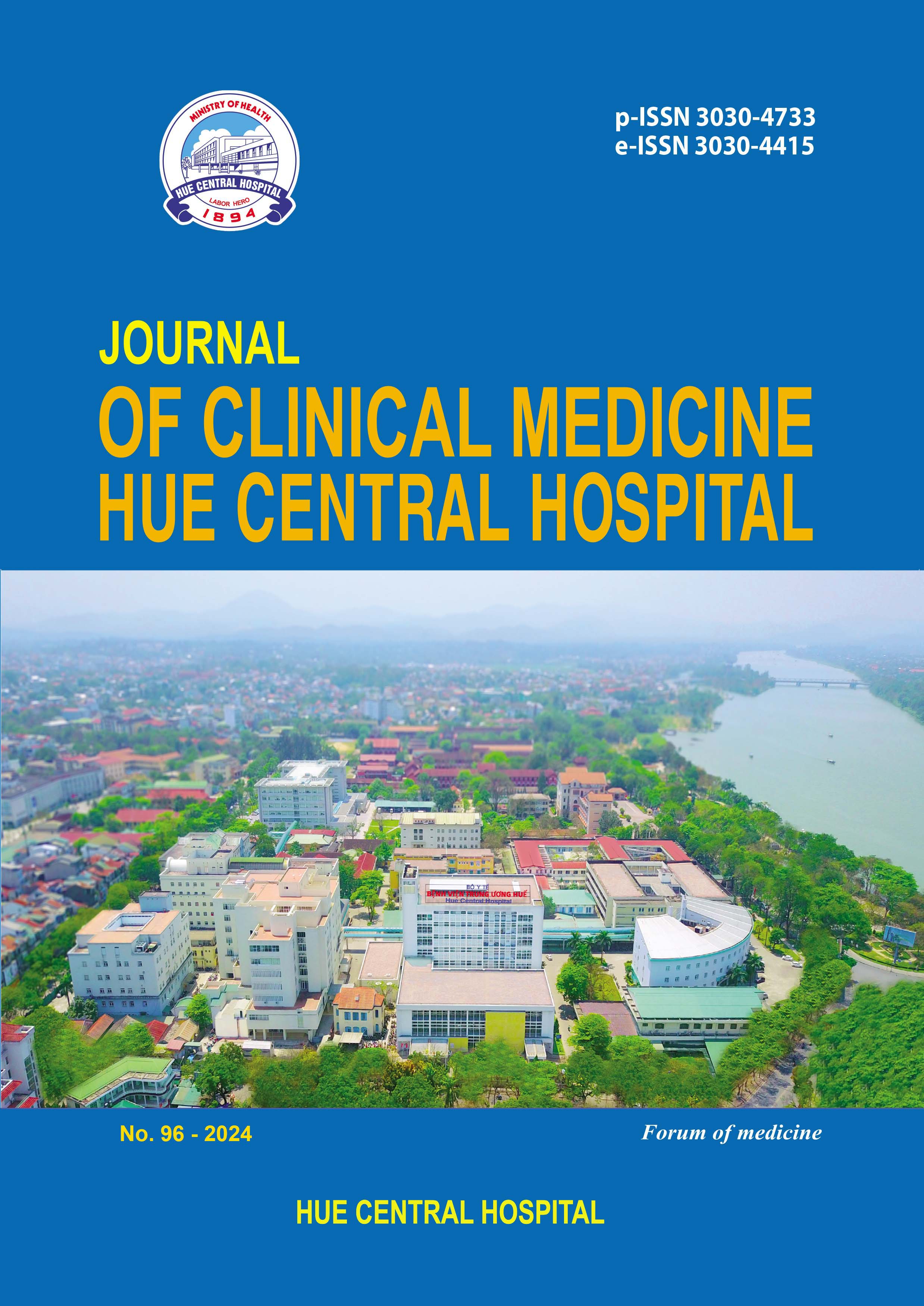Abstract
Aims: This study aims to determine serum Immunoglobulin G levels; and investigate the association between serum IgG levels and treatment outcomes in pediatric sepsis
Methods: All patients aged from 2 months to 15 years who meet the criteria for diagnosis of sepsis were admitted at the Pediatric Center, Hue Central Hospital, and underwent blood IgG testing upon admission. The research steps include Clinical examination and subclinical tests for diagnosis of sepsis, quantification of serum IgG level, treatment according to protocol, and evaluation of treatment outcomes.
Results: The proportion of patients with decreased serum IgG level accounted for 22,1%, with a median of 310.0 (238.0 - 449.5) mg/dL. There is a correlation between serum IgG level and the severity of sepsis. Serum IgG level is valuable in predicting the mortality rate of pediatric patients with sepsis.
Conclusion: Serum IgG level decreases in pediatric sepsis. It is an important point to consider during treatment; in addition to treating the specific underlying cause of the infection.
References
Carrol ED, Ranjit S, Menon K, Bennett TD, Sanchez-Pinto LN, Zimmerman JJ, et al., Operationalizing Appropriate Sepsis Definitions in Children Worldwide: Considerations for the Pediatric Sepsis Definition Taskforce. Pediatr Crit Care Med, 2023;24(6):e263-e271.
Goldstein B, Giroir B, Randolph A, International Consensus Conference on Pediatric S, International pediatric sepsis consensus conference: definitions for sepsis and organ dysfunction in pediatrics. Pediatr Crit Care Med, 2005;6(1):2-8.
Singer M, Deutschman CS, Seymour CW, Shankar-Hari M, Annane D, Bauer M, et al., The Third International Consensus Definitions for Sepsis and Septic Shock (Sepsis-3). JAMA, 2016;315(8):801-10.
Fleischmann-Struzek C, Goldfarb DM, Schlattmann P, Schlapbach LJ, Reinhart K, Kissoon N, The global burden of paediatric and neonatal sepsis: a systematic review. Lancet Respir Med, 2018;6(3):223-230.
Liem BT, Tuan TD, Sepsis in Pediatric in Vietnam: A Retrospective Study in Period 2008 to 2018. Systematic Reviews in Pharmacy, 2020;11(1):179-184.
Akatsuka M, Tatsumi H, Sonoda T, Masuda Y, Low immunoglobulin G level is associated with poor outcomes in patients with sepsis and septic shock. J Microbiol Immunol Infect, 2021;54(4):728-732.
Roman G, Buratti C, Fiamenghi V, Sousa I, Navarro N, Andreolio C, et al., Low IgG as a marker for risk of mortality in pediatric sepsis in the PICU. Pediatric Critical Care Medicine, 2021;22(Supplement 1 3S):298.
Taccone FS, Stordeur P, De Backer D, Creteur J, Vincent JL, Gamma-globulin levels in patients with community- acquired septic shock. Shock, 2009;32(4):379-85.
Hội VH, Khảo sát rối loạn miễn dịch thể dịch ở bệnh nhi nhiễm trùng huyết tại khoa nhi cấp cứu- hồi sức tích cực và chống độc, bệnh viện Phụ sản -nhi Đà Nẵng. Tạp chí Nhi khoa, 2022;15(4):46-54.
Shankar-Hari M, Culshaw N, Post B, Tamayo E, Andaluz- Ojeda D, Bermejo-Martin JF, et al., Endogenous IgG hypogammaglobulinaemia in critically ill adults with sepsis: systematic review and meta-analysis. Intensive Care Med, 2015;41(8):1393-401.
Dietz S, Lautenschlager C, Muller-Werdan U, Pilz G, Fraunberger P, Pasler M, et al., Serum IgG levels and mortality in patients with severe sepsis and septic shock: The SBITS data. Med Klin Intensivmed Notfmed, 2017;112(5):462-470.
Venet F, Gebeile R, Bancel J, Guignant C, Poitevin- Later F, Malcus C, et al., Assessment of plasmatic immunoglobulin G, A and M levels in septic shock patients. Int Immunopharmacol, 2011;11(12):2086-90.
Průcha M, Zazula R, Herold I, Dostál M, Hyánek T, Bellingan G, Presence of hypogammaglobulinemia–a risk factor of mortality in patients with severe sepsis, septic shock, and SIRS. Prague medical report, 2015;114(4):246-257.
Bermejo-Martin JF, Rodriguez-Fernandez A, Herran- Monge R, Andaluz-Ojeda D, Muriel-Bombin A, Merino P, et al., Immunoglobulins IgG1, IgM and IgA: a synergistic team influencing survival in sepsis. J Intern Med, 2014;276(4):404-12.
Tamayo E, Fernandez A, Almansa R, Carrasco E, Goncalves L, Heredia M, et al., Beneficial role of endogenous immunoglobulin subclasses and isotypes in septic shock. J Crit Care, 2012;27(6):616-22.
| Published | 01-06-2024 | |
| Fulltext |
|
|
| Language |
|
|
| Issue | No. 96 (2024) | |
| Section | Original article | |
| DOI | 10.38103/jcmhch.96.8 | |
| Keywords | Nhiễm khuẩn huyết, trẻ em, IgG, sốc nhiễm khuẩn, tử vong Immunoglobulin G, pediatric sepsis, sepsis shock, mortality |

This work is licensed under a Creative Commons Attribution-NonCommercial-NoDerivatives 4.0 International License.
Copyright (c) 2024 Journal of Clinical Medicine Hue Central Hospital

